FREE GUIDE
Your Complete Guide to a Scalable eCommerce Personalization Strategy
Learn how to create a foolproof personalization strategy for eCommerce with our 5-step personalization roadmap.
Published: Oct 31, 2022
Introduction
E-commerce has been growing to be a crowded space. By the time visitors land on your site, they may have seen many other similar products in many different shapes and sizes from many different brands. So, how can you differentiate your brand, engage online shoppers, and ultimately turn them into buyers?
The answer comes down to creating a personalized experience.
OK, so does it mean I just need to email my customers saying, “Hey John, here’s our new offer” and I’ve achieved personalization?
Unfortunately, that’s not going to be enough.
E-commerce personalization isn’t just telling people what they already know. It’s about creating a meaningful experience that is super relevant to the shoppers’ needs in a given moment, anticipates their wants in the future, and overall reflects their values and behaviors.
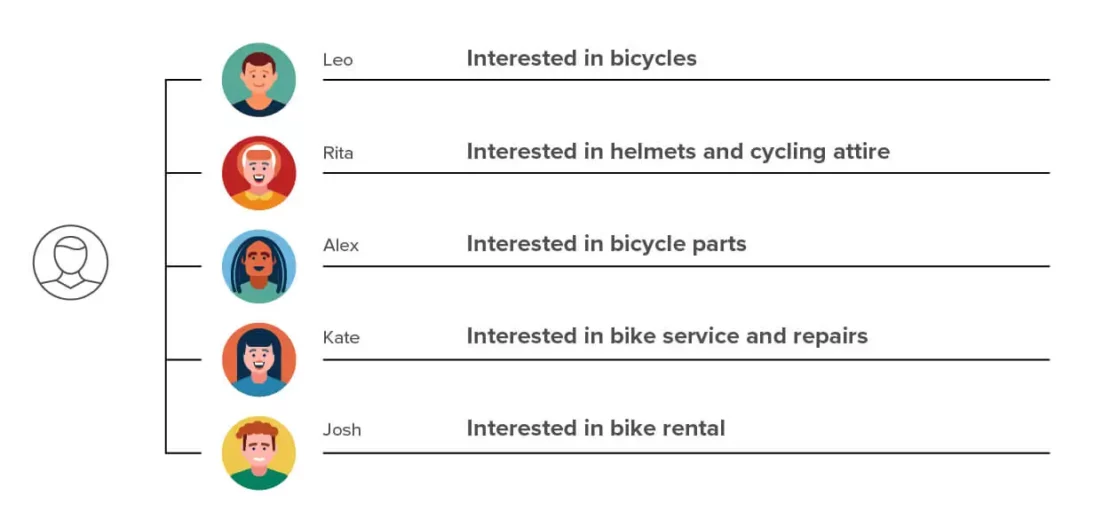
Alas, McKinsey research indicates that only 15% of retailers have successfully implemented personalization strategies. What happens most often is that instead of focusing all their efforts on following a clear personalization roadmap, businesses jump into quick-win customization solutions without fully knowing who their visitors and customers really are or what they truly want.
It’s time to make it right.
In this guide, we’ll explain everything you need to know about creating an eCommerce personalization strategy for your business. Here’s what we’ll cover:
1. Why personalization strategy is important in 2021
2. Personalization strategy essentials
– Data
– Insights
– Goals, objectives, KPIs
3. Personalization roadmap
Ready to learn? Let’s jump in.
3 reasons why your brand needs a personalization strategy in 2021
Online shoppers now prioritize tailored and relevant customer communication. They’re willing to provide more and more personal information to brands in exchange for a higher quality experience.
“Personalization is still in its infancy stages, which will accelerate as it yields strong dividends for both consumers and retailers.”
Christina Brandeberry, Managing Director of Shopping and Performance at Google
By implementing a personalization strategy, brands can create a customer journey map, turn visitors into loyal customers, and achieve financial business goals. Below we’ll discuss three main reasons why eCommerce brands should zero in on personalization in 2021 and beyond:
1. Personalization addresses the evolving customer expectations
The digital age has elevated consumer expectations for convenient and contextual experiences to unprecedented heights. Today shoppers are gravitating toward brands that feel most similar to them regarding values, ones that strive to understand them and cater to their specific needs.
That’s where personalization comes in. Personalization allows brands to contextualize messages, create exclusive offers, and customize the experience based on each unique buyer persona.
According to Accenture, 91% of consumers prefer shopping with brands that treat them in a personal manner. They’re more likely to buy from stores that provide them with relevant offers and recommendations. In another survey, Epsilon found that over 80% of respondents expect and desire personalization from retailers.
“Digital transformation is no longer optional. It is required for brands to improve customer experiences and remain competitive.”
Kevin Mabley, SVP Strategy and Analytics at Epsilon
Think of your own shopping experiences. When you’re in an online store, do you like receiving relevant product recommendations or are you OK with being offered 25% off all steaks when in fact you’re a vegetarian? What about reading a blog post that shows how to use a product you’ve recently purchased vs being served with another generic ad?
If you expect all of these things as an integral part of your online experience, so do your customers. Start treating your potential customers the way you want to be treated.
2. Personalization increases customer satisfaction
When you give consumers what they actually want, they tend to stick with you. Think about Netflix. Every time you visit the app, it offers something new and relevant to watch based on your past behavior. Or Spotify: The complex algorithm actually curates a playlist that’s just for you facilitating easy music discovery. No wonder both of these apps have a join user base of over 450 million.
A survey by Gladly revealed that customers now value personalization more than speed when it comes to customer service. In another survey, Reflektion also found that 98% of respondents value the importance of personalization in driving greater engagement among customers.
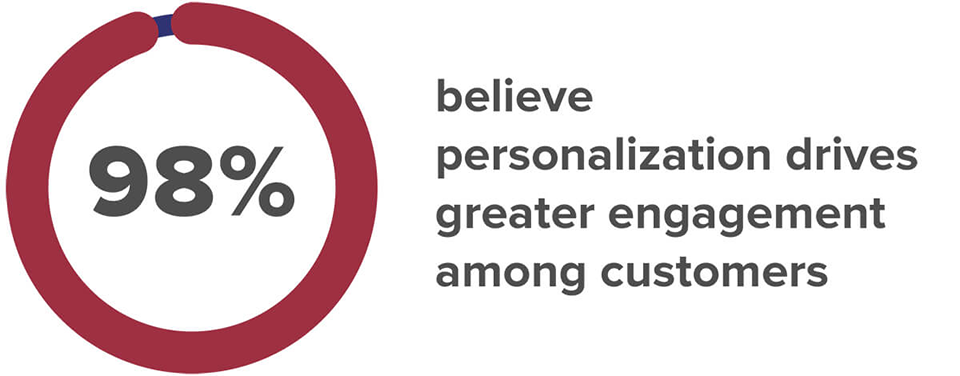
So what does it mean? The more accurate a personalized experience, the more likely customers will pay attention to your offers and take your desired actions.
3. Personalization drives conversions and sales
A scalable personalization strategy helps grocery brands increase their total sales by 1 to 2%. The number is even higher for other retailers. If a brand incorporates personalization into their overall marketing strategy, it can also reduce acquisition costs by up to 50%.
If that’s not enough to convince you, check out these statistics:
- 80% of consumers prefer to buy from brands that offer personalized experiences (Epsilon).
- 40% of shoppers who clicked a personalized recommendation during their first visit came back, compared to only 19% of shoppers who didn’t click a recommendation (Salesforce).
- 44% of consumers said that if they had a personalized experience with a brand, they would become repeat buyers (Segment).
- Personalization yields a 5-15% uplift in revenue (McKinsey).
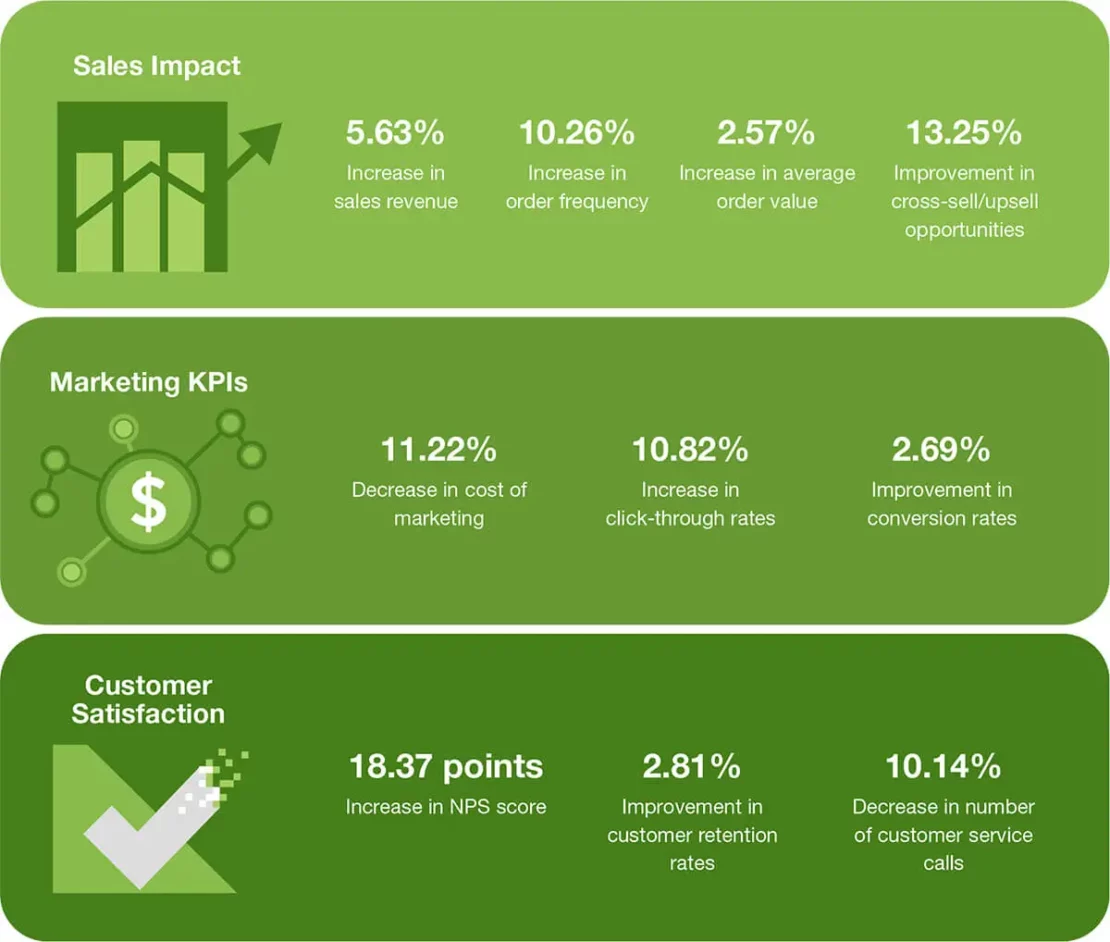
Need real-life proof? Check out Sephora’s success story in creating a personalized omnichannel experience for loyal customers.
Sephora’s Beauty Insider tiered loyalty program offers its highest-level members early access to new products, invitations to exclusive events, and more incentives. All members’ profile details are updated across channels, and they receive customized recommendations based on their input.
The results? About 80% of Sephora’s total transactions come from its Beauty Insider’s members. The brand also stays in the top slot in Sailthru’s Retail Personalization Index for the third year in a row. No doubt that personalization works like a charm.
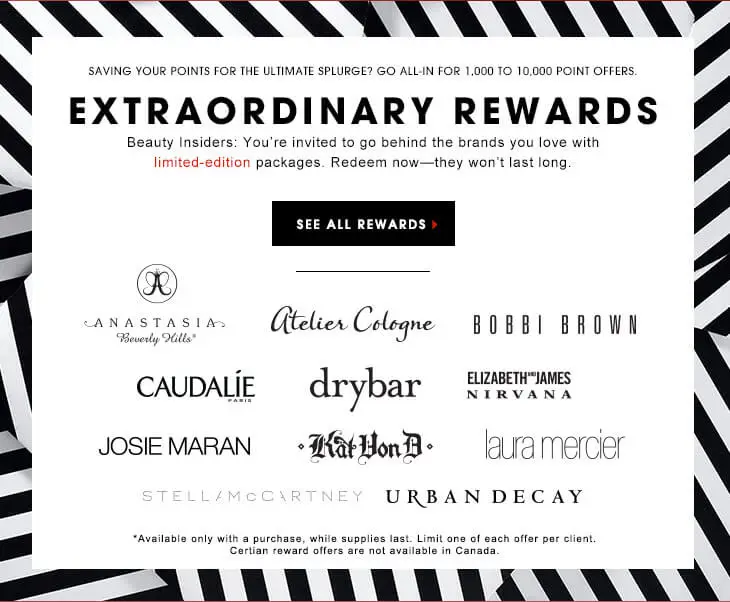
Scalable personalization strategy: The essentials
To create an exceptional personalized experience, you need to have a strong personalization strategy first. It will help you define a specific long-term vision and build the right foundations for success.
If you jump into implementing personalization tactics without first drafting the course, you might see short-term success but fail to deliver a high ROI in the long run.
The question is: What makes a personalization strategy successful? Two things.
First, a personalization strategy should be data-driven, incorporate insights from external and internal environments, and include clear goals, objectives, and key performance indicators (KPIs).
Second, it should come with a specific roadmap (more on that below), which includes audience segmentation, campaign ideation, priority setting, orchestration, and optimization.
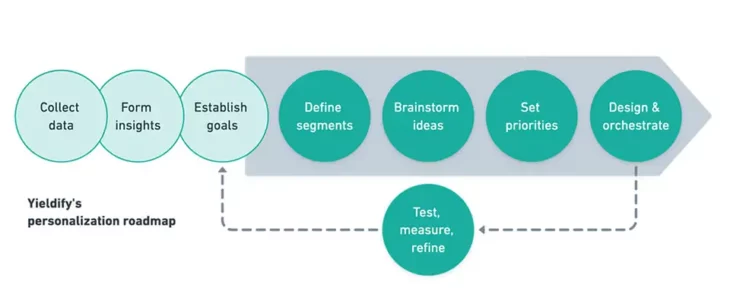
Failing to have all of these elements in place can result in fragmented customer journeys where some parts are personalized while others fall short and create bottlenecks for your business.
Personalization missteps can even translate to a negative impact on your bottom line: IBM’s data shows that 45% of consumers say they would be less likely to purchase or wouldn’t purchase at all if the experience a brand provides differs from their ideas of the ideal experience.
Let’s zero in on the stepping stones of a foolproof personalization strategy for now.
Data
You can’t do effective personalization without first learning who your potential and existing customers are, where they’re from, what is their background, their values and beliefs what makes them excited and what do they consider annoying… To answer all of these questions and more you need DATA.
When you have rich customer data at hand, you can have a 360-degree view of your customers and always be one step ahead with your personalization strategy.
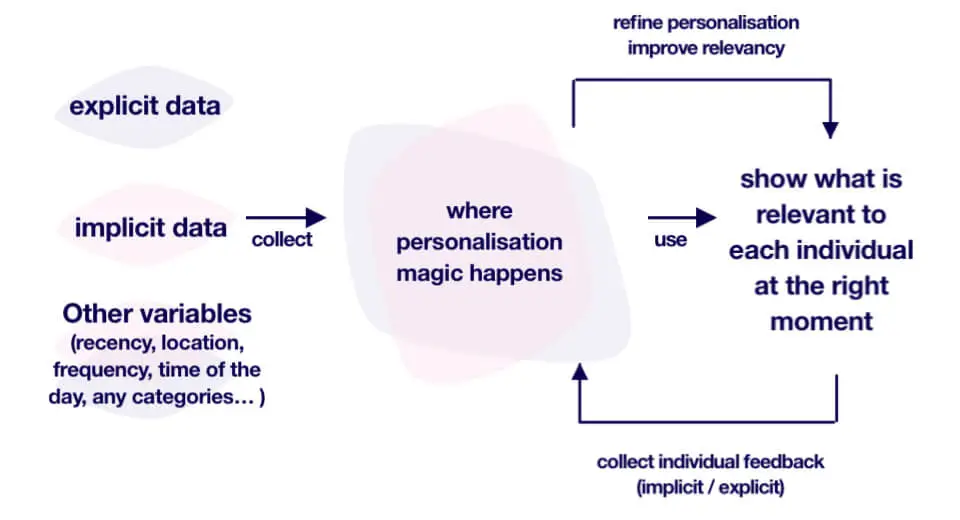
To gain insights into the target market, consider using these resources:
- Website analytics tools like Google Analytics to know where in the world your visitors are coming from, which devices they primarily use, which pages they visit the most, how much time they spend on your website, where and how they convert, etc.
- Behavior analytics tools like Hotjar to know which areas of the page your website visitors focus on, what makes them stay and convert vs what makes them bounce, etc.
- SEO tools like Ahrefs or SEMrush to know which keywords drive the most organic traffic to your page, to discover what products and content your potential customers are searching for, etc.
- Social listening tools like Hootsuite, Buffer, or Agorapulse to monitor what your customers are saying about you or your competitors in the social space.
- Sentiment analysis platforms like MonkeyLearn or IBM Watson to understand and monitor the social sentiment of their brand, product, or service.
- Primary data like interviews, research data, quizzes.
- Secondary data like industry reports, third-party surveys, white papers, research studies, etc.
As mentioned earlier, customers are more willing to share their data in exchange for benefits like hyper-relevant content, exclusive deals, special product recommendations, and better UX. Hence, it’s an excellent opportunity for brands to collect data to enhance the customer experience.
That said, more data doesn’t mean more value. According to Gartner, most brands currently collect more data than they can reasonably expect to use, especially given that many have yet to build out the capabilities needed to leverage that data.
Insights
From the previous section, you already see that there’s an abundance of data that can be collected, and more so, there is a willingness from the customers themselves to give that data in exchange for improved experiences.
However, data alone isn’t going to help you establish an actionable personalization strategy. It’s the insights that you draw from filtering, sorting, grouping, visualizing, analyzing, interpreting that data that drive results.

As an eCommerce business, focus on these channels to form insights into your overall business performance:
- Website: How much traffic is your website generating? Where is it coming from? Do you get more new or returning visitors? Which pages are most popular? How much time do people spend on a single page on average? And so on.
- Email: What are your avg. email open rates and click rates? What time of day is your audience most engaged? Are specific subscriber segments engage with your email communications more than the others? What’s your average email conversion rate?
- Social media analytics: Where the majority of your followers are located? Are they city-dwellers or suburban? What’s their age, gender, occupation? Which of your social media posts get the most likes and which have the highest CTR?
- Paid marketing activities: What is your average ad click-through rate? How much does it cost for you to acquire a customer from paid advertising? Do they boast a higher AOV than those coming from other media channels?
For example, data might show you that customer X bought a product Y four times in the last 3 months. After analyzing that data, you might learn the product bought is in fact a gluten-free energy bar, which provides insight that the customer is likely gluten-intolerant and leads an active lifestyle.
You can then leverage that insight to personalize customer X’s shopping experience by recommending gluten-free products, recipes, sports equipment, etc.
By transforming data into actionable insights, you can identify customers’ value triggers, then score and rank customers to facilitate effective targeting and personalization.
Goals, objectives, and KPIs
For a personalization strategy to be easily scalable, you must establish clear goals, objectives, and KPIs. Without them, you have no way of knowing whether or not your personalization strategy is working. Here’s a quick breakdown:
- Goals are broad statements of what you want your strategy to ultimately achieve.
- Objectives are more concrete steps that can help you achieve your goal. It’s best if they follow the S.M.A.R.T criteria (i.e. are specific, measurable, actionable, realistic, and time-bound).
- Key Performance Indicators (KPIs) are specific measurable values, or metrics, used to indicate your progress towards achieving business objectives.
Here is a formula to help you quickly determine goals, objectives, and KPIs for your strategy:
Based on [INSIGHT], I will [OBJECTIVE] as measured by [KPI] to achieve [GOAL].
For example, “Because the homepage experiences 85% drop-off, I will improve site navigation as measured by click-through rate to increase customer engagement in my online store.”

Your 5-step personalization roadmap
It’s one thing to understand the foundation of a successful personalization strategy. It’s another to actually build meaningful, personalized experiences that facilitate conversions.
In the last section of this guide, we’ll give you a roadmap to achieve a higher personalization level. This roadmap includes 5 steps: Segmentation, Brainstorming, Prioritization, Design and Orchestration, Testing & Optimization.
Step 1: Segment
It’s hard to personalize without segmentation. In fact, it’s impossible.
By segmenting your target market, you determine groups of individuals that have a common set of characteristics and can create highly relevant, personalized messages tailored to each of these groups. If you ignore segmentation, your message will be generic and lack personal touches.
To start segmenting your audience, you can use these parameters:
- Demographic segmentation: Classification based on personal attributes like gender, age, income, occupation.
- Geographic segmentation: Classification based on physical location.
- Behavioral segmentation: Classification based on product usage, payment methods, purchase frequency, etc.
- Psychographic segmentation: Classification based on attitudes, lifestyle, personalities, opinions, trait values, etc.
- Acquisition segmentation: Classification based on acquisition channel and/or campaign.
- Technographic segmentation: Classification based on technology customer use.
- Firmographic segmentation: Classification based on industry, number of employees, revenue, etc.
- Algorithmic segmentation: Classification based on predictive targeting or automated segment discovery.
Depending on where you are on the personalization maturity curve, your market segmentation is going to vary in complexity. For example, if you’re just starting, the easiest way to segment your customers to achieve some level of personalization is based on location.
For an intermediate level of personalization, you might want to combine several segmentation criteria to achieve higher relevancy. For example, segment based on location and gender. For an advanced level of personalization, you can combine multiple segmentation criteria and bring product/category affinity into the mix, e.g. segment based on location, gender, and recently purchased products.
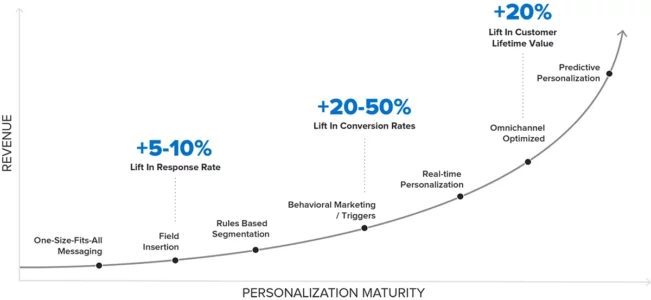
Step 2: Brainstorm ideas
Once you’re done with segmenting your target audience, you can start brainstorming campaign ideas and formats. Here are some ideas to get you started:
- Offer related product recommendations on checkout pages.
- Add real-time social proof to product pages.
- Show a spin-to-win popup to new website visitors.
- Invite return buyers to fill out a survey.
- Showcase progress towards incentives.
Here you can see the latter illustrated by Tattly. The progress bar is an interactive way to nudge customers towards higher-value purchases by showing what they’ll get in return.
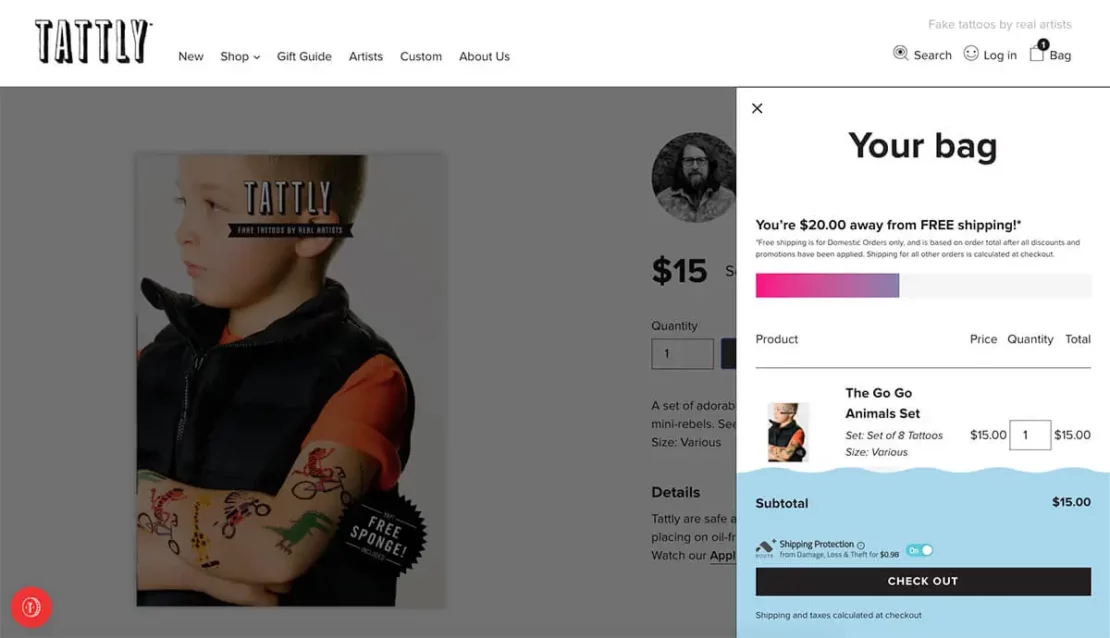
Step 3: Prioritize
Now that you’ve developed a healthy list of personalization campaign ideas focused on your chosen customer segment and aligned with your business goals, it’s time to cherry-pick the ones that will bring the most value in the shortest amount of time.
Here are some methodologies for idea prioritization you can try:
- PIE framework: This is the most popular model to prioritize ideas, which includes three variables: P – Potential (how much improvement can be made on the pages?), I – Importance (how valuable is the traffic to the page?), and E – Ease (how complicated will the test be to implement on the page?).
- ICE score: This method considers Impact (what will the impact be if this works?), Confidence (how confident am I that this will work?), and Ease (what is the ease of implementation?).
- PXL model: This method asks you a couple of questions. For example, is the change above the fold? Is the change noticeable in under 5 seconds? Does it add or remove anything? Does the test run on high traffic pages?
- Prioritization matrix: This method helps you focus on ideas that will bring the most value to the largest amount of your target audience.
Neither of these methods alone is perfect so see which one works best for what you’re trying to achieve. All in all, you want to make sure you’re focusing your efforts on the areas of the website that shoppers visit the most.
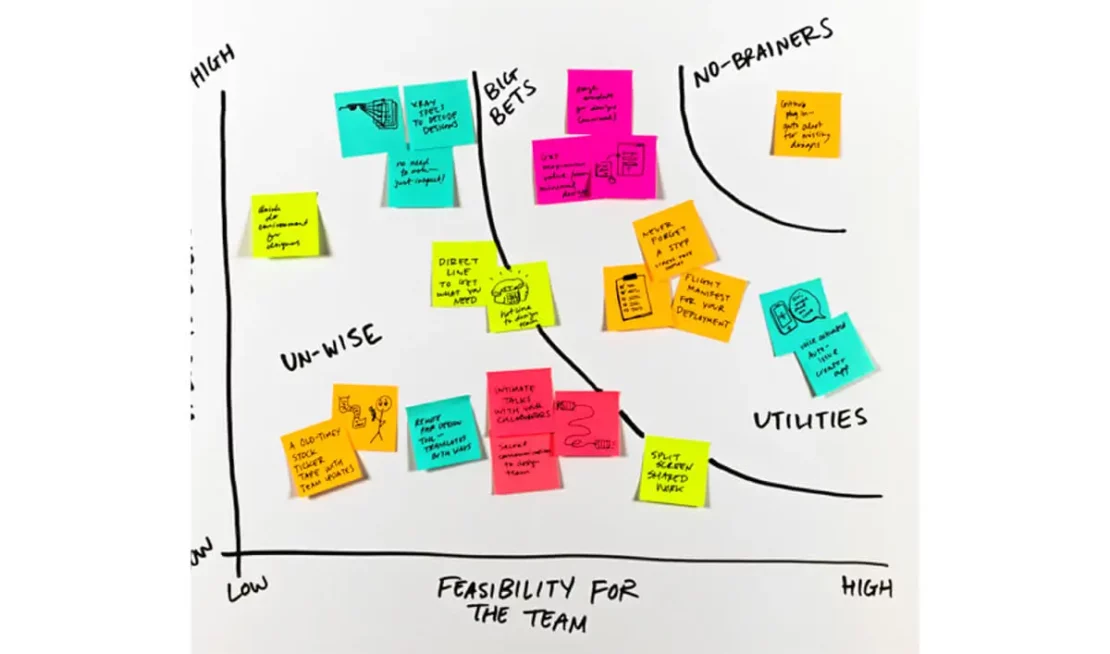
Step 4: Design and orchestrate
This is the step where your personalization campaign ideas start to take shape. With an abundance of on-site messaging formats – pop-ups, overlays, sticky bars, embedded forms, and whatnot – you must find the one that will best fit the message you want to convey.
For example, if you’re setting up a navigational campaign on the homepage, you might do with a sticky top bar. On the other hand, if you have a time-bound promotion running, that same sticky bar can be enriched with a countdown timer to instill urgency. Here’s an example of a countdown timer we did for M.J. Bale:
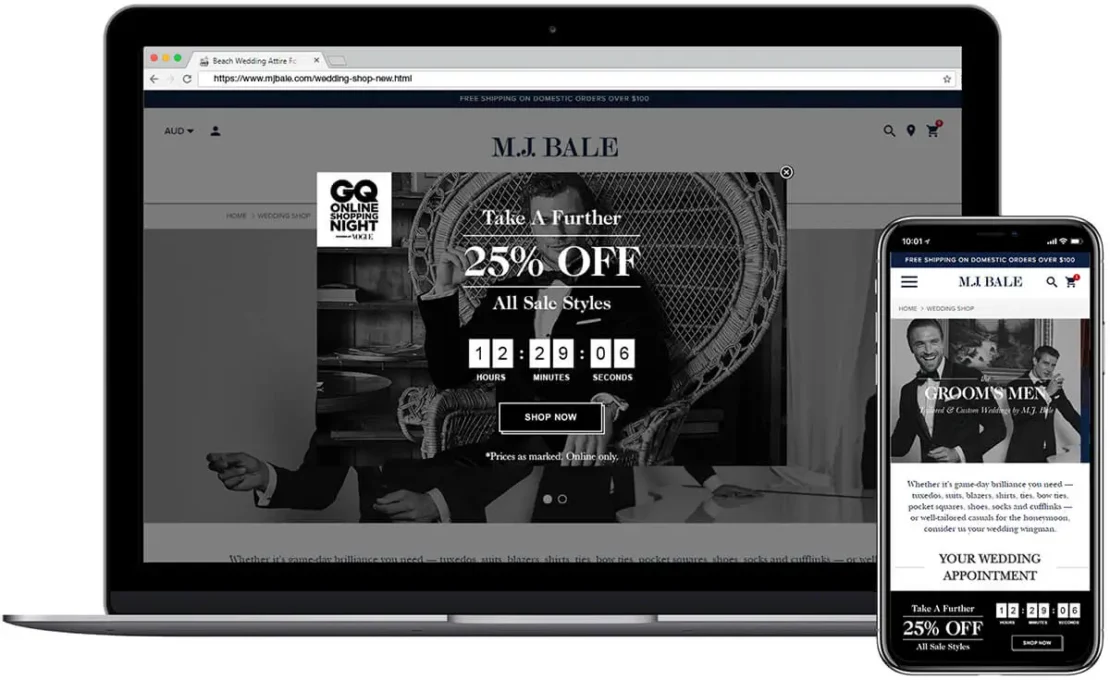
If your goal is to minimize product page abandonment, you might choose to implement real-time social proof to build trust and nudge visitors towards purchase.
You might as well create an exit-intent overlay that reengages those about to leave and follow up with a cart recovery email that features an exclusive offer and encourages recipients to come back to your store and complete their purchase. Read the Busbud case study to see how they achieved particularly impressive results using this approach!
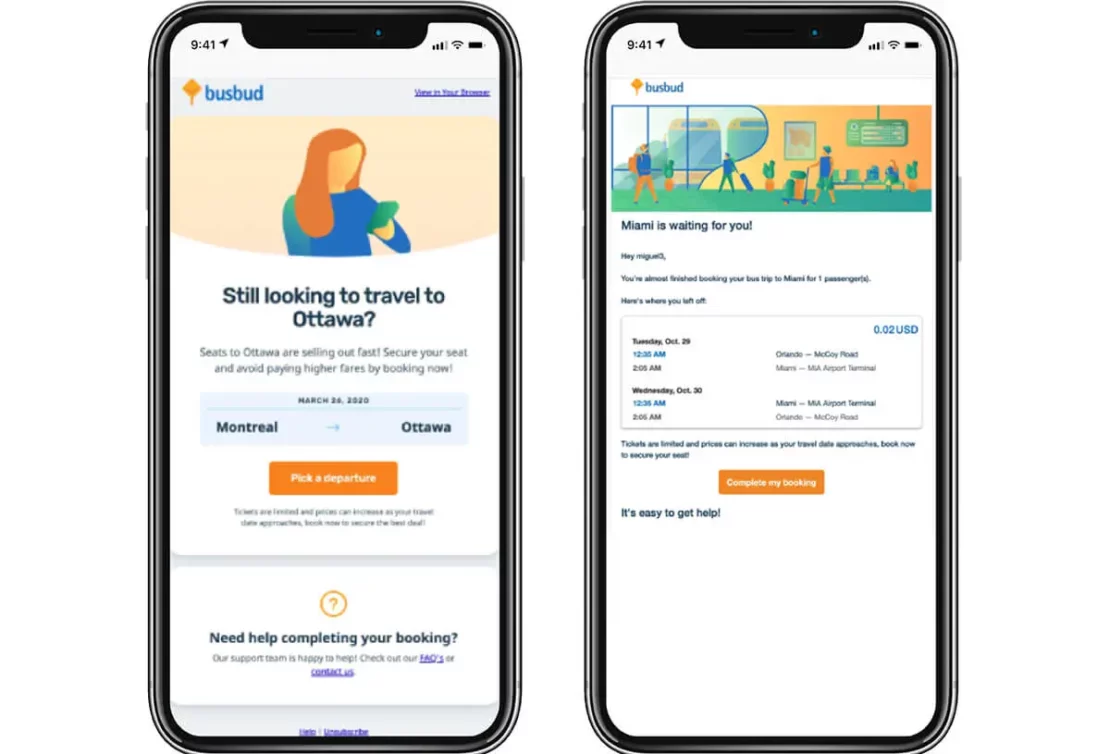
As you can probably see already, there is no single recipe for a successful personalization campaign. Your overall strategy will include a number of different campaigns all tailored to influence specific KPIs and bring you closer to achieving agreed objectives.
There are, however, best practices that you can follow that will make the design and setup of your personalization campaigns easier. We recommend to use the 6-W framework:
- Why: By this point, you should already have answered this question when setting the goals and objectives of your campaign.
- Who: Same as above, this is your target audience, i.e. the customer segment that you’re going after with your campaign.
- What: What is your campaign about? Is it an exclusive offer, a flash sale, a customer testimonial…
- When: When will your campaign run and when will it trigger? You might want to use different timing to achieve different results.
- Where: Which channel will you run your campaign on? If on the website, which pages will it feature on?
- How often: This refers to frequency. How often will your customers see the campaign during their session?

The sophistication of this step will also depend on the technology and human resources available to you. We deep-dive into personalization technology in this free guide, but here are some of the key considerations you need to make when judging personalization tech:
- Can it capture or ingest customer data?
- Can it leverage that data to create customer segments?
- Can it optimize based on real-time behavior?
- Does it support rules-based and/or predictive personalization?
- Does it offer testing algorithms?
- Which channels does it facilitate?
- Does it integrate seamlessly with your eCommerce stack?
Besides, technology, your personalization strategy requires a team of qualified individuals. It’s essential this team combined different backgrounds, as you’ll need expertise in project management, copywriting, design, technical implementation, operations, analytics, and more.
Note: There are fully-managed personalization solutions available on the market, such as Yieldify. With Yieldify, you get access to award-winning technology, but you’re also assigned a team of account managers, data analysts, IT and design specialists to run personalization campaigns at scale on your behalf. To learn more, get in touch with our experts.
Step 5: Test, measure, and optimize
In order to prove your personalization strategy is working and generating return on investment (ROI), you’ll have to run various tests and experiments. A data-driven approach to personalization helps you identify which tactics cut through the noise, and which barely move the needle on your bottom line.
There are a plethora of testing methods available to marketers, from A/B testing and multivariate testing, and more. Use them in unison to get the most in-depth understanding of your personalization campaigns. At Yieldify, we run incrementality tests to measure the monetary value your efforts bring.
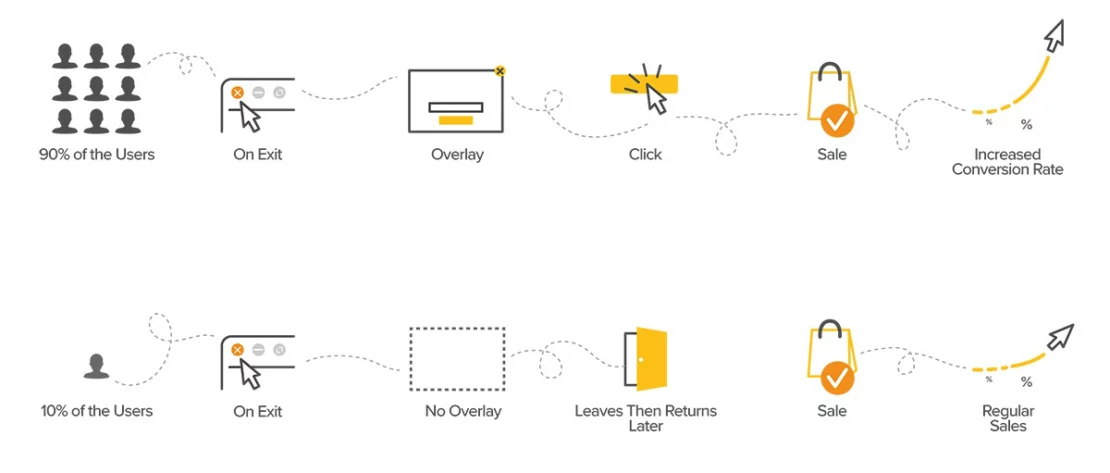
Don’t forget that whatever test you decide to run, it’s important to leverage control groups. Without a control group, you’ll never know if your campaign was effective, ineffective, or even detrimental to your success.
Final thoughts
Personalization has become a powerhouse of successful online brands by helping them create an exceptional experience, build a solid loyal customer base, and boost revenue. Now it’s your turn to develop your own personalization strategy and take advantage of it to grow your business.
Need help getting started? Get in touch with Yieldify’s team of experts and discover the fastest and most reliable personalization solution already trusted by more than 500 leading eCommerce brands worldwide.